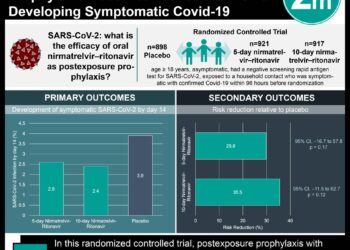Patient values and preferences when considering migraine prevention options
1. In this systematic review, patients with episodic migraine preferred oral pharmacologic treatments that reduced the severity, frequency, and duration of migraines.
2. Patients also valued a lower risk of developing migraines on day 1 post-dosing as well as a shorter duration of restriction on daily activities.
Evidence Rating Level: 1 (Excellent)
Study Rundown: The plethora of options for preventing episodic migraines means that treatment selection may often come down to personal preference, for instance one that reduces the number of migraines per month versus one that has minimal side effects. However, it is unclear which outcomes and interventions are generally most valued by patients for migraine prevention. This systematic review aimed to synthesize data regarding adult patients’ values and preferences regarding pharmacologic treatments for preventing migraines. Among the selected studies, one showed that patients considered number of days with migraines per month, number of migraine attacks per month, and time between attacks as the three most important factors. Another study reported that patients considered migraine severity and consistent treatment effectiveness as the most important factors. Data from a third study suggested that when migraine duration was longer, patients were more concerned about restrictions on daily activities. While most patients preferred oral tablets, studies on injection preferences showed that mode of administration and length of effectiveness were the most important patient values, and that patients preferred subcutaneous injection devices that automatically retracted the needle and had a shorter injection time. The generalizability of this study was limited by an inability to directly compare all attributes between studies as well as the presence of potential commercial conflicts of interest. Nevertheless, this systematic review suggested that patients prefer oral treatments that reduce migraine severity, frequency, and duration and improve ability to perform daily activities without increasing risk of developing migraines on day 1 post-dosing.
Click to read this study in AIM
In-Depth [systematic review]: This systematic review investigated patients’ values and preferences for pharmacologic treatments that prevent episodic migraine attacks. A total of 6 studies were selected with a combined population of 2307 participants; 4 of these studies were conducted in the United States, 1 in the United States and Germany, and 1 in Japan. Participants had a mean age of 40.3 to 50.9 years, and 79.7% of participants were women. Of the 6 studies, 3 had a moderate risk of bias and 3 had a low risk of bias. Of the 40 participants in one study, 31 (78%) chose migraine frequency (days/month), migraine frequency (attacks/month), and time between attacks as the 3 most important aspects. Another study utilized relative attribute importance (RAI) to determine factors shaping a patient’s treatment preference; the attributes with the highest RAIs were migraine severity (31.7% [95% CI, 29.1% to 34.4%]) and consistent treatment effectiveness (21.8% [95% CI, 19.1% to 24.6%]). Another study found that a median 6.5% reduction in migraine risk on day 1 post-dosing was considered by patients to be equally valuable to, or more valuable than, 1 fewer migraine day within 1 month post-dosing. Further, a median reduction of 1.5 migraine days within 1 month post-dosing was as valuable as, or more valuable than, an 8% decrease in migraine risk on day 1 post-dosing. Oral tablets were the most favored mode of administration (preference weight [PW], 1.00 [standard error (SE), 0.14]), followed by quarterly injections (PW, 0.62 [SE, 0.09]) and monthly injections (PW, 0.45 [SE, 0.09]). Overall, this systematic review suggested that most patients value oral treatments that reduce migraine severity, frequency, and duration when considering pharmacologic preventative therapy for episodic migraines.
Image: PD
©2025 2 Minute Medicine, Inc. All rights reserved. No works may be reproduced without expressed written consent from 2 Minute Medicine, Inc. Inquire about licensing here. No article should be construed as medical advice and is not intended as such by the authors or by 2 Minute Medicine, Inc.




